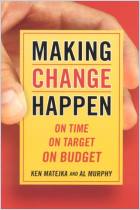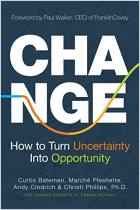
Recommendation
Daryl R. Conner’s book operates under the assumption that the future of business will be steeped in chaos. Thus, it tries to prepare the leaders of the future for the kinds of challenges that result from chaos. These challenges will primarily involve employees, since every person reacts differently, and usually unfavorably, to change. The companies that marshal an agile workforce and adapt quickly to unexpected circumstances will do the best in this unstable environment. This thoroughly researched book gives leaders a decisive look at what happens when the human psyche tries to navigate change. Conner documents the problems people have when they deal with change and offers a disciplined strategy for making your organization more limber. Even if you’ve heard many of the key concepts presented before, as you navigate the waters of change, this calm, lucid manual will keep your hands steady at the helm. Therefore, getabstract.com recommends it to everyone who is confronting change, and that is everyone.
Summary
About the Author
Daryl R. Conner is President and CEO of ODR, Inc., a research-based consulting firm. He is also the author of Managing at the Speed of Change.

















Comment on this summary